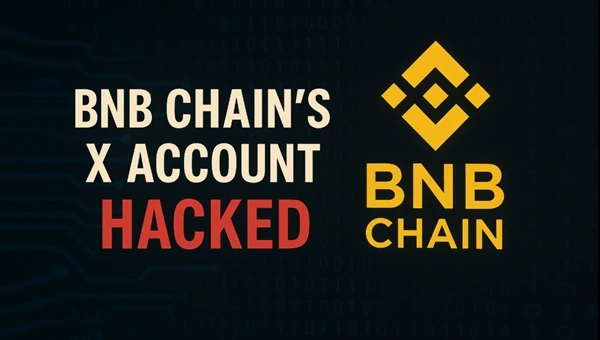


The full recovery came later that day. The BNB Chain team, backed by Binance leadership, confirmed that control was restored and that the financial fallout was modest but real. Users who interacted with the malicious posts were promised full reimbursement.
This incident highlights how even social media is now a front line in digital asset security, with substantial implications for crypto projects and their followers.
The takeover began when the verified BNB Chain account published at least ten posts promoting fraudulent airdrop links. These links led to imitation sites that mimicked legitimate BNB or Binance pages but contained subtle domain character swaps aimed to deceive users.
The attacker deployed a phishing smart contract linked through those pages. Victims who followed the bait, connected wallets, or signed transactions across various blockchain networks lost funds almost immediately. Security analysis traced the domains back to infrastructure used by the “Inferno Drainer” phishing group, which specializes in wallet-draining schemes using spoofed domains and social engineering.
Binance cofounder Changpeng Zhao alerted users in real time, warning that the attacker was targeting WalletConnect. He advised followers not to click links or authorize any actions from the compromised account. Meanwhile, the BNB Chain and Binance security teams contacted X to suspend the account and initiated steps to restore access.
Loss estimates from the incident vary. BNB Chain reported around $8,000, while external on-chain analyses and media estimates reach $13,000. Differences stem from internal movements, token swaps, and meme-coin dumps tied to the phishing contract, highlighting the complexity of assessing on-chain attack impacts.
The market largely shrugged off the breach. BNB’s token price remained stable, signaling that traders interpreted the event as a social media mishap rather than a fundamental risk to the protocol.
Recovery, Reimbursement, and Reputation
By mid-day, the BNB Chain team announced that the @BNBCHAIN account was fully under their control again. All phishing posts had been removed. The project is committed to compensating any user who lost funds during the attack.
In an unusual twist, the attacker funneled stolen assets into a meme token called “4” to capitalize on a potential pump. Community members responded by buying the token widely, boosting its price in a tongue-in-cheek protest. Binance later called this “a funny comeback by the community.”
Still, the key question remains how the attacker gained access in the first place. The BNB Chain team has launched an internal investigation into security policies, administrative permissions, third-party app integrations, and internal access controls. No definitive root cause has been disclosed yet.
In communicating with the community, the team emphasized that the incident did not affect BNB Chain’s core infrastructure. The hack was limited to a social media channel and did not compromise validators, consensus, or on-chain logic.
Larger Context: Social Media as a Soft Underbelly in Crypto
Crypto hacks often focus on bridges, wallet exploits, or protocol vulnerabilities. But this case underscores how social media hijacks are now a serious vector for financial damage. In 2025 alone, a surge of phishing attacks and platform takeovers has produced multiplayer losses across DeFi, NFT projects, and blockchain foundations.
By contrast with past major hacks, such as the $570 million bridge exploit on Binance’s network, this social media breach targeted perception and trust rather than infrastructure. The attacker did not exploit any code vulnerabilities but relied on human trust, authority, and the influence of a verified account.
In that sense, this incident sits between a public relations crisis and a blockchain attack. It is a stark reminder that crypto security must extend beyond infrastructure to the external interfaces that projects maintain.
Lessons for Users and Developers
For users: always verify a domain before connecting a wallet. Be wary of any WalletConnect prompts coming from links, even when shared by verified accounts. Use hardware wallets or multisig approvals when possible. Treat social media links with suspicion.
For project teams: segregate access to social accounts. Avoid shared credentials or third-party dashboards that aggregate control. Add multi-factor authentication, require strict audits on apps with posting privileges, and employ anomaly detection.
In the end, the BNB Chain X hack illustrates how weak security in one channel can ripple into real monetary losses. It is a reminder that in crypto, trust is built, or broken, in many dimensions.
He has worked with several companies in the past including Economy Watch, and Milkroad. Finds writing for BitEdge highly satisfying as he gets an opportunity to share his knowledge with a broad community of gamblers.
Nationality
Kenyan
Lives In
Cape Town
University
Kenyatta University and USIU
Degree
Economics, Finance and Journalism


Facts Checked by Vlad Hategan

 Fact checked by
Fact checked by 
 eabungana@gmail.com
eabungana@gmail.com 